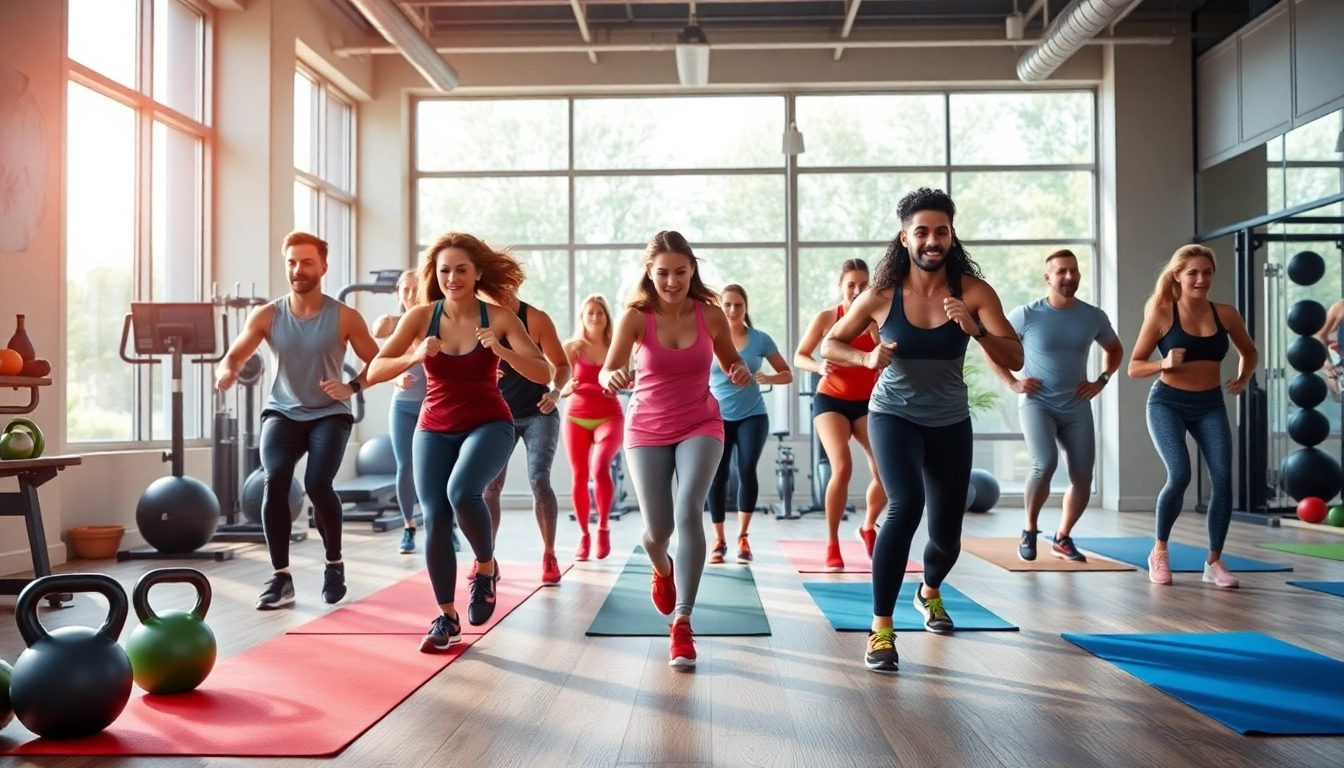Understanding Gym Group Training
What is Gym Group Training?
Gym group training is a fitness format where individuals come together to participate in structured workouts under the guidance of a certified instructor. This dynamic approach to fitness fosters a sense of community, encourages motivation, and often leads to improved workout performance due to the camaraderie and accountability that group settings offer. Typically comprising various exercises and fitness modalities, group training caters to different skill levels and fitness goals, making it an attractive option for both beginners and seasoned athletes.
Benefits of Participating in Group Workouts
There are several compelling advantages to engaging in gym group training. These benefits include:
- Motivation and Accountability: Being part of a group encourages participants to push their limits and stay committed. Knowing that others are relying on your presence can help maintain consistency in attendance.
- Variety of Workouts: Group classes often feature diverse workouts that incorporate various fitness disciplines, ensuring that workouts remain engaging and prevent monotony.
- Expert Guidance: Qualified instructors lead group sessions, offering professional advice on form, technique, and modifications for different fitness levels, which reduces the risk of injury.
- Social Interaction: Group training fosters social connections, which can enhance mental well-being and make exercising more enjoyable. Forming friendships can further increase adherence to fitness goals.
- Cost-Effectiveness: Group sessions tend to be more affordable than one-on-one personal training, providing access to professional coaching without the expense.
Common Group Training Formats
Group training can take on many different formats, catering to various interests and fitness goals. Some of the most commonly offered formats include:
- High-Intensity Interval Training (HIIT): This format alternates between intense bursts of activity and short rest periods, providing a time-efficient workout that boosts metabolism.
- Zumba and Dance Fitness: These classes integrate rhythm and movement to deliver a fun, cardiovascular workout that appeals to those who enjoy music and dance.
- Boot Camps: Typically held outdoors, boot camps combine strength and cardio training in a group setting, often utilizing bodyweight exercises and minimal equipment.
- Yoga and Pilates: These formats focus on flexibility, strength, and mindful movement, providing participants with physical and mental challenges.
- Circuit Training: Circuit classes feature a series of exercises performed in rotation, allowing participants to work on strength, endurance, and agility simultaneously.
How to Choose the Right Group Training Program
Assessing Your Fitness Goals
Before selecting a group training program, it’s essential to clarify your fitness goals. Are you looking to build strength, improve cardiovascular fitness, lose weight, or enhance general health? Tailoring your group training choice to your objectives will increase the likelihood of enjoyment and success.
Identifying the Right Class Structure
The structure of the class can significantly impact your experience. Consider whether you prefer a class that emphasizes high-intensity workouts, a lower-impact approach, or a blend of varying disciplines. Research instructors and read reviews to find a program that aligns with your preferences in terms of pace, engagement, and complexity.
Evaluating Trainer Qualifications and Experience
The expertise of the trainer leading the group is crucial for ensuring a safe and effective workout environment. Investigate their certifications, years of experience, and any specialties they may have, such as injury rehabilitation or advanced fitness techniques. Feel free to ask potential trainers about their approach to group training to determine if it resonates with your personal learning style.
Creating an Engaging Group Training Environment
Fostering Community and Team Spirit
Building a strong sense of community is vital within group training sessions. Instructors can encourage connection through team-building activities, personal introductions, and by fostering an inclusive atmosphere where every participant feels valued. Group challenges, friendly competitions, and social events can enhance camaraderie and encourage attendance.
Maximizing Space and Equipment for Group Settings
Efficiency in using space and equipment is crucial for a successful group training session. Instructors should design workouts that allow for smooth transitions and minimal downtime between exercises. For instance, using portable equipment such as resistance bands, kettlebells, and mats ensures versatility while eliminating overcrowding.
Incorporating Music and Motivation
Music plays a significant role in energizing group workouts and can greatly enhance the overall experience. Choosing the right playlist can uplift moods, encourage maximum effort, and increase the enjoyment factor. Additionally, instructors can use motivational coaching techniques to inspire participants throughout each session, reinforcing the importance of discipline and determination.
Tracking Progress in Group Training
Setting Personal and Group Goals
To foster motivation and achievement, it’s essential for both members and instructors to set measurable and realistic goals. These can be personal—such as completing a certain number of classes—or group-focused, like reaching fitness milestones as a team. Regularly reviewing progress can help maintain focus and commitment.
Utilizing Fitness Tech Tools
Integrating fitness technology can enhance the group training experience. Tools such as fitness tracking apps, heart rate monitors, and virtual platforms allow participants to monitor their performance, share successes with teammates, and stay engaged outside of class. Technology can also assist instructors in evaluating the effectiveness of training programs over time.
Measuring Success and Enjoyment
It’s essential to evaluate not only the physical success of group training efforts but also the enjoyment derived from them. Regularly soliciting participant feedback can provide valuable insights into class effectiveness, while ensuring that members feel heard and appreciated. Utilize this feedback to modify and adapt sessions to better meet the needs and desires of your group.
Advanced Techniques for Group Training Instructors
Adapting Workouts to Varied Skill Levels
One of the challenges instructors face is accommodating participants with varying levels of fitness and strength. Effective group training requires the ability to modify exercises and offer options for different fitness levels to ensure that each participant can work at their own pace while feeling challenged.
Creative Problem-Solving in Class
Instructors often encounter unexpected situations—be it a participant’s injury, a lack of equipment, or an unanticipated number of attendees. Developing creative problem-solving skills will allow instructors to adapt on the fly and ensure that everyone continues to have a productive workout experience. Engaging in ongoing education and professional development can assist instructors in mastering this skill.
Encouraging Member Feedback and Adjustments
Asking for participant feedback is a pivotal strategy for improving group training sessions. Regular check-ins encourage transparency and communication and can help instructors refine their approach based on the collective experiences of participants. A feeling of mutual respect between instructor and participants leads to a more positive environment where everyone can thrive.




